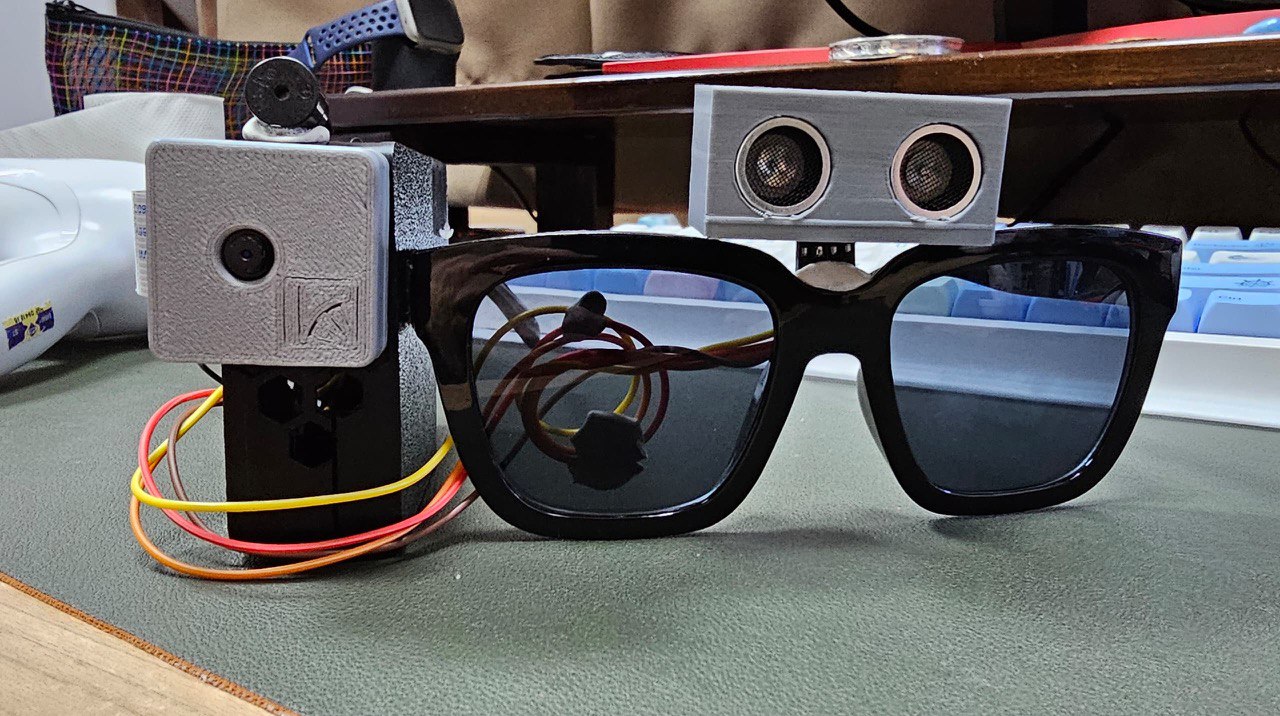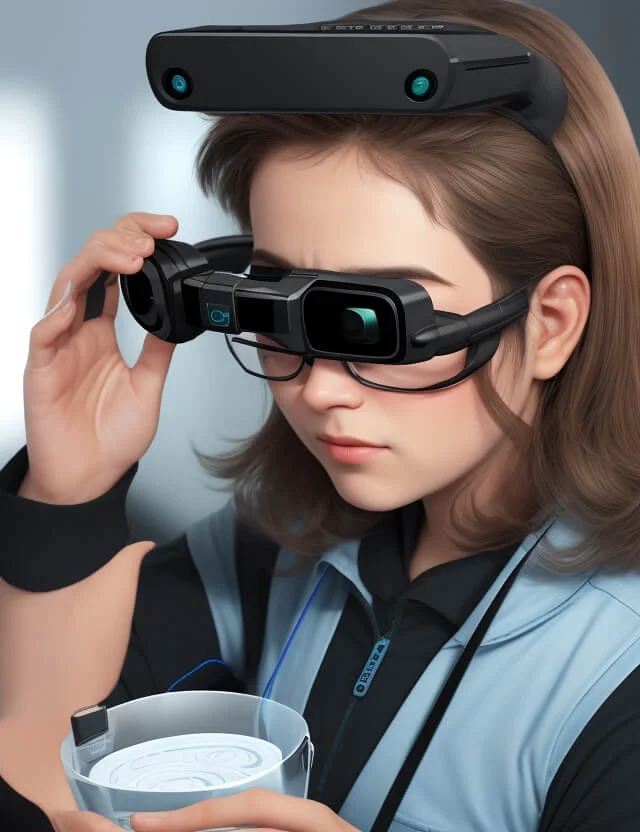Enhancing Access Via Assistive Technology for the Blind
The assimilation of assistive innovation for the blind represents a pivotal innovation in accessibility, essentially altering exactly how people browse their environments and involve with culture. From screen readers to innovative clever canes, these tools not just enhance independence yet also advertise inclusivity in various rounds of life. As we check out the diverse sorts of assistive devices and their concrete effect on everyday living, it ends up being vital to analyze how continuous technological developments are reshaping the landscape of support for the blind area. What implications do these advancements hold for the future of access?
Summary of Assistive Innovation
Assistive technology refers to a range of tools and software designed to improve the capacities of people with disabilities, including those that are blind or visually damaged. This modern technology plays a vital role in advertising independence and boosting the lifestyle for individuals. By supplying alternate techniques for accessing details and carrying out daily tasks, assistive technology empowers people to navigate their settings a lot more efficiently.
The growth and application of assistive innovation embrace a range of principles aimed at fostering accessibility. These concepts include user-centered style, which prioritizes the demands and preferences of the individual, and the combination of modern technology into day-to-day tasks. Such advancements ensure that assistive gadgets are not just practical yet additionally instinctive and simple to make use of.
Additionally, assistive innovation incorporates a varied spectrum of options, from low-tech choices like magnifiers to sophisticated advancements such as screen visitors and Braille displays. The continuous advancement of this field is driven by the demand to resolve the special obstacles encountered by individuals with aesthetic disabilities (Wearable technology for low vision). As innovation proceeds to development, the potential for enhancing availability and advertising inclusivity continues to be encouraging, eventually adding to a more equitable society

Sorts Of Assistive Instruments
Numerous sorts of assistive gadgets are readily available to sustain people who are blind or aesthetically impaired, each developed to resolve specific requirements and difficulties. These devices can be broadly classified right into three main kinds: low-tech, mid-tech, and state-of-the-art options.
Low-tech tools consist of things such as magnifiers, Braille labels, and responsive maps. These are relatively straightforward devices that enhance the individual's ability to interact with their atmosphere without needing complicated modern technology.
Mid-tech devices commonly entail advanced functions, such as electronic magnifiers and portable Braille note-takers. These devices can provide performances like speech outcome, allowing individuals to gain access to details a lot more efficiently.

Impact on Daily Living
The accessibility of various assistive gadgets substantially enhances the lifestyle for people that are aesthetically impaired or blind, impacting their everyday living in extensive means. By integrating modern technologies such as screen viewers, Braille displays, and audio description solutions right into their regimens, individuals gain higher autonomy and freedom. These tools assist in accessibility to information, making it possible for individuals to execute daily tasks, such as checking out e-mails, navigating public rooms, and appreciating media web content.
In addition, assistive tools encourage people to involve more fully in social interactions and community activities. The capacity to make use of mobile phones geared up with ease of access functions enables for smooth interaction and link with others. This connectivity fosters a feeling of belonging and minimizes feelings of isolation.
In specialist settings, assistive modern technology sustains productivity by allowing individuals to complete work tasks effectively. Tools like voice recognition software application and specialized magnification tools allow individuals to join the labor force on official website equal footing with their sighted peers.

Improvements in Technology
Current technological advancements have substantially transformed the landscape of tools available for people who are blind or aesthetically impaired. The integration of expert system (AI) and artificial intelligence has actually given rise to applications that enhance navigating and item acknowledgment. Smart device apps can now utilize AI to identify and define surroundings in real-time, providing users with beneficial contextual details.
Furthermore, innovations in haptic technology have actually caused the development of wise walking canes equipped with sensors that spot challenges and give tactile feedback. This equips individuals to navigate their environment with raised confidence and independence. Technologies in text-to-speech software program and braille display screens have boosted the availability of electronic content, permitting for smooth communication with various media.
Wearable innovations, such as wise glasses, are also making strides in assisting aesthetic impairment. As technology continues to develop, the possibility for even more transformative tools continues to be on the perspective.
Future Trends and Innovations
As innovation quickly progresses, the future of assistive devices for people that are blind holds immense promise. Innovations in expert system (AI) and artificial intelligence are poised to change the way blind users engage with their environments. AI-driven applications are being developed to improve item recognition, allowing users to identify and browse their environments with better ease and precision.
Furthermore, advancements in haptic feedback modern technology are allowing the production of tactile maps and navigation help that offer real-time information with touch. These developments not only enhance mobility yet additionally foster self-reliance. Furthermore, wearable gadgets outfitted with enhanced reality (AR) attributes are arising, offering individuals visual information via sound descriptions, consequently connecting the void between the physical and electronic worlds.
Additionally, the combination of clever home technology provides new opportunities for accessibility, permitting individuals to control their living environments with voice commands or smart device applications. As collaboration in between tech designers and the blind neighborhood proceeds, the concentrate on user-centered layout will make sure that future developments are customized to meet the distinct demands of this populace (Wearable technology for low vision). The trajectory of assistive modern technology promises an extra comprehensive and empowering future for individuals that are blind
Conclusion
Finally, assistive modern technology plays an essential role in improving accessibility for individuals with visual problems. The diverse next array of devices, consisting of screen viewers and wise walking sticks, considerably improves everyday living and anchor cultivates independence. Continual advancements in modern technology and user-centered layout make certain that these tools cater effectively to the distinct requirements of the blind community. As developments development, boosted inclusivity and empowerment can be anticipated, eventually improving the lifestyle for those impacted by aesthetic impairments.
The integration of assistive innovation for the blind stands for a crucial improvement in accessibility, essentially altering how individuals navigate their atmospheres and engage with culture.Assistive modern technology refers to a variety of tools and software application developed to enhance the capabilities of individuals with handicaps, consisting of those that are aesthetically impaired or blind. Wearable technology for low vision.As modern technology rapidly progresses, the future of assistive devices for people that are blind holds enormous assurance. The trajectory of assistive modern technology promises an extra comprehensive and empowering future for individuals that are blind
In verdict, assistive innovation plays an important function in enhancing access for people with aesthetic problems.